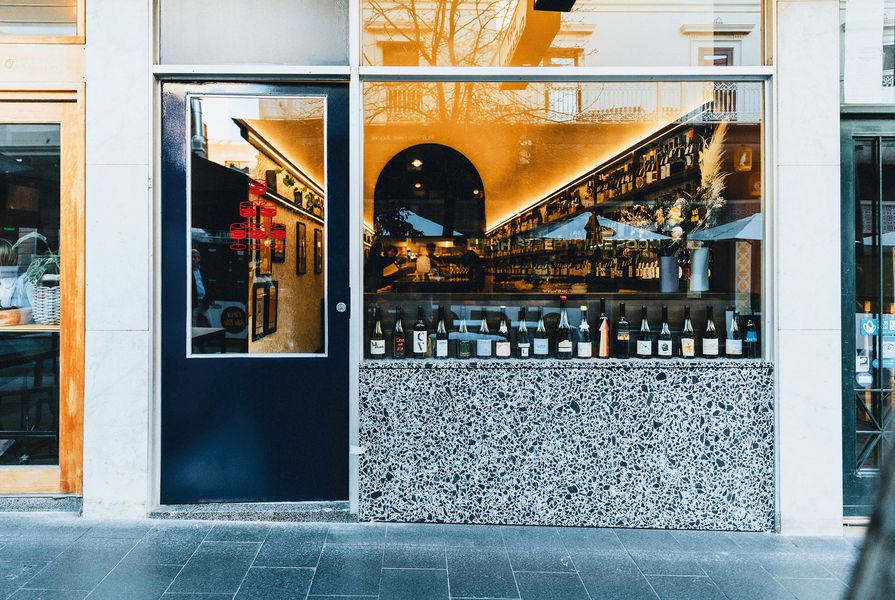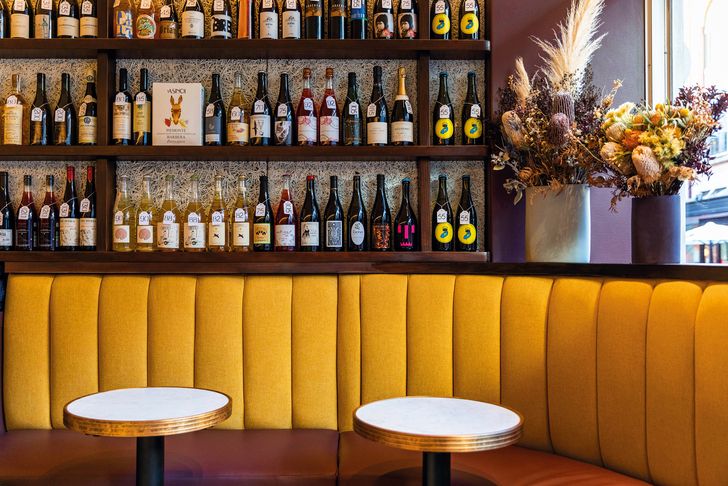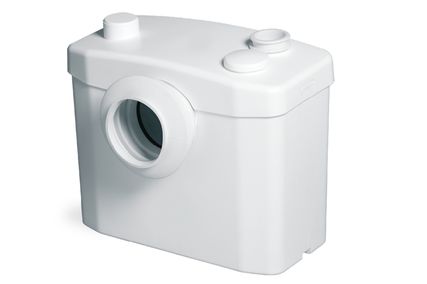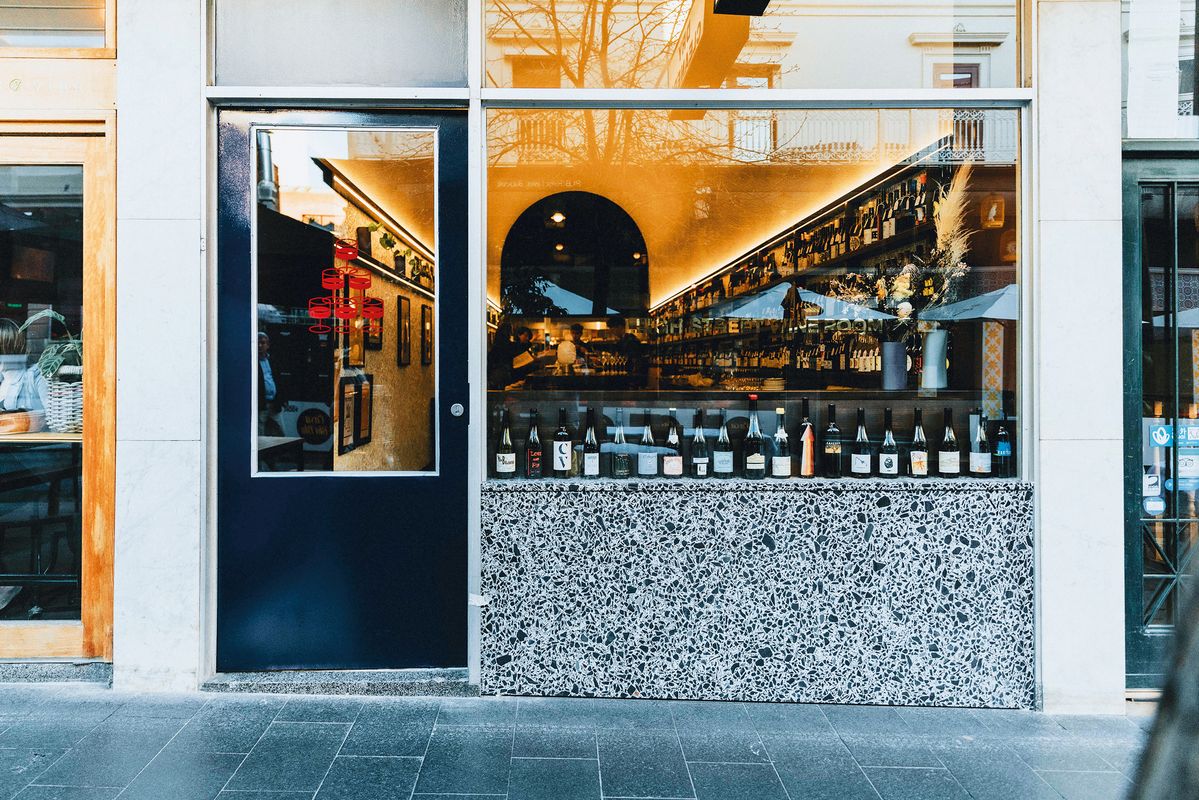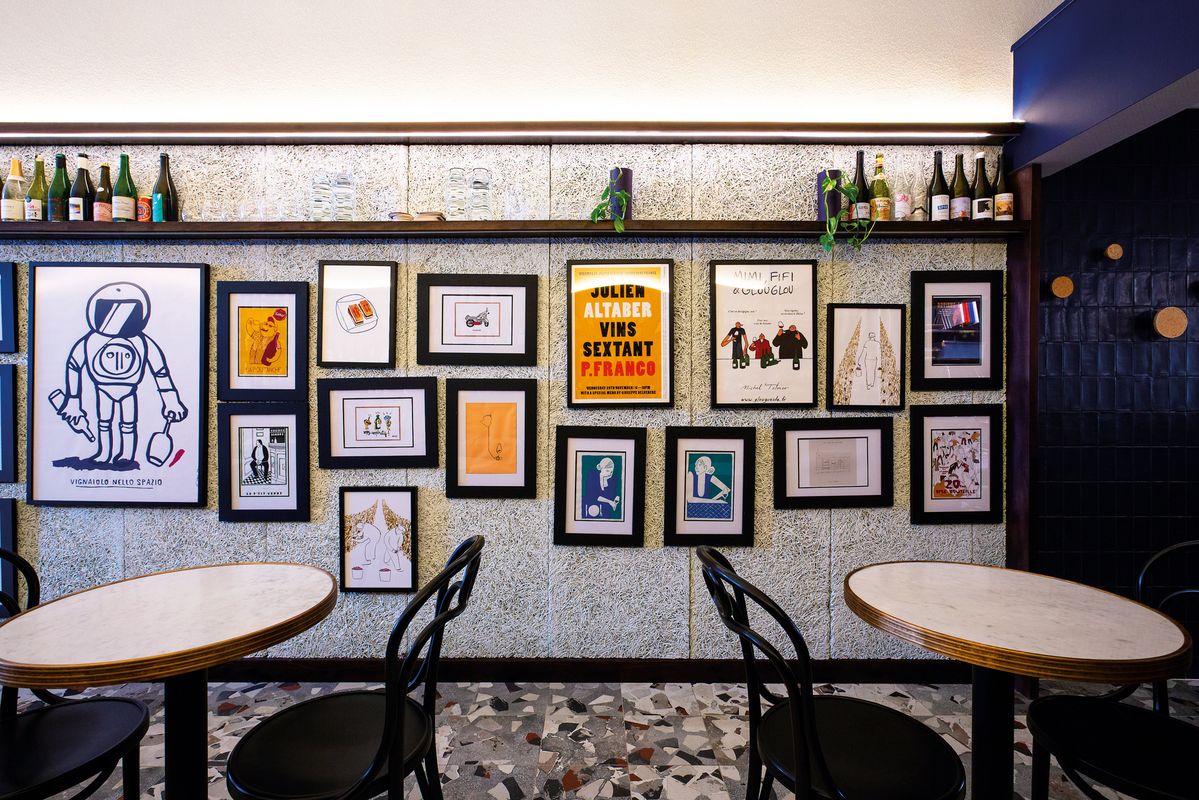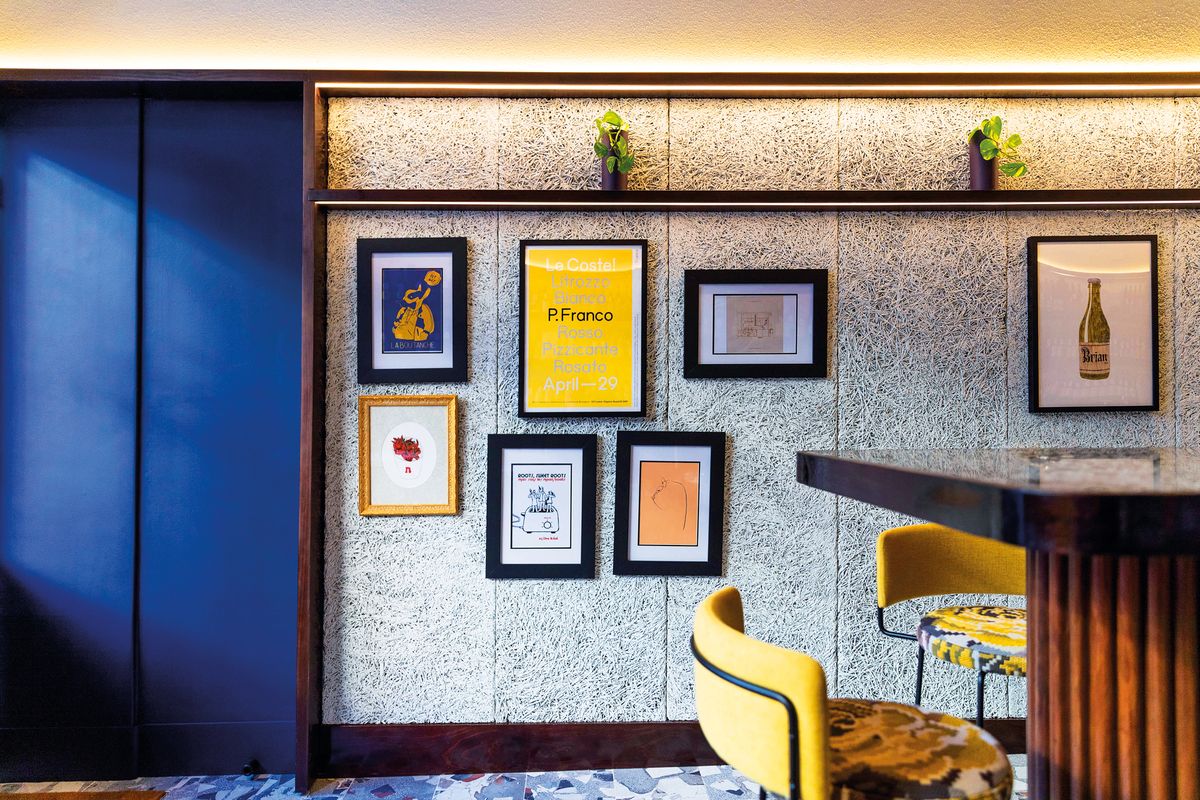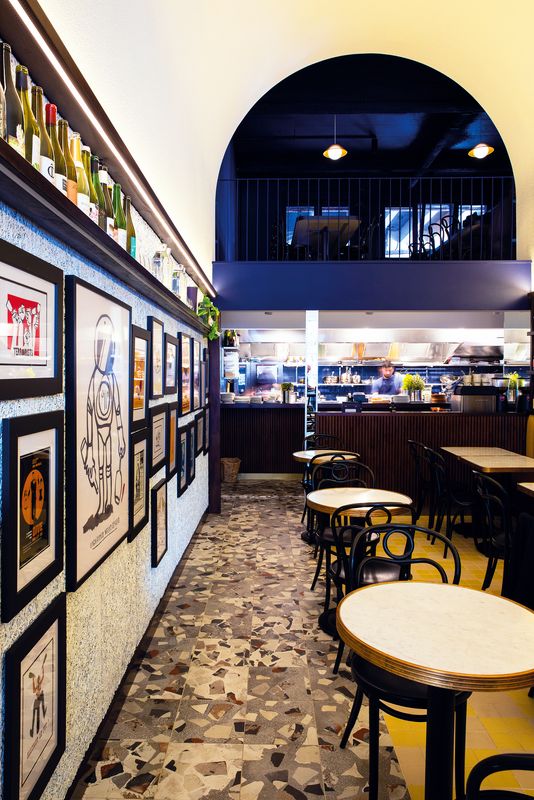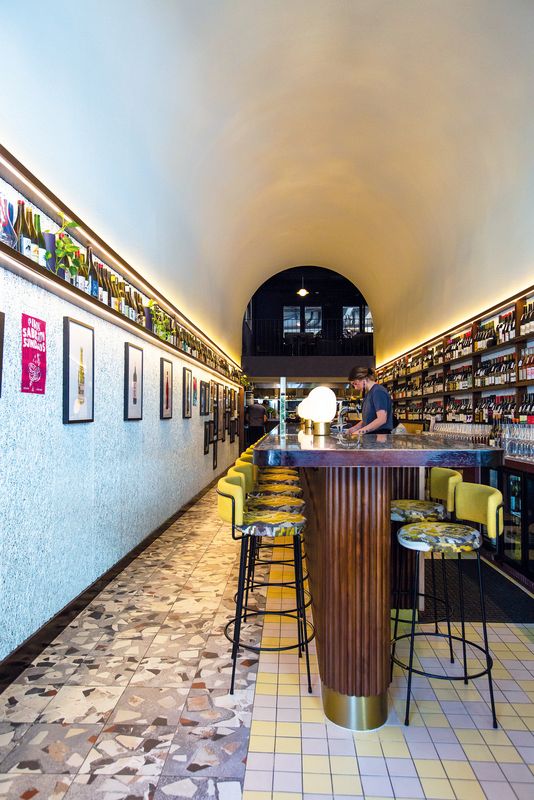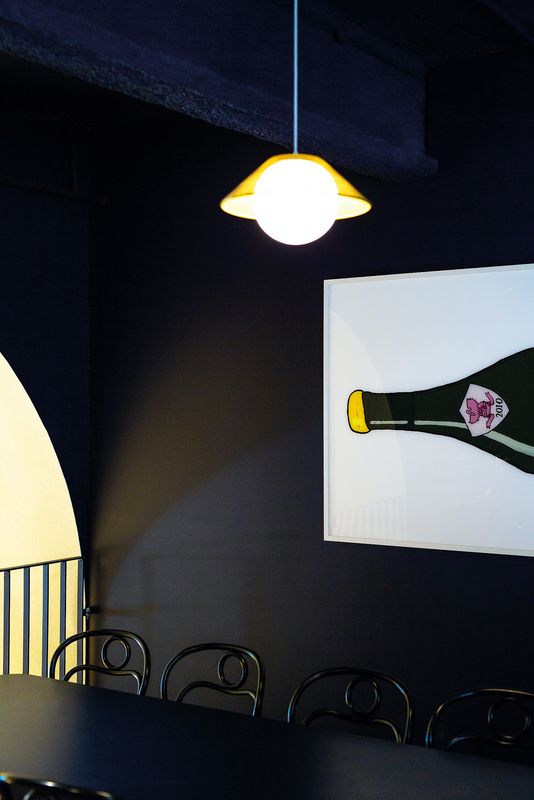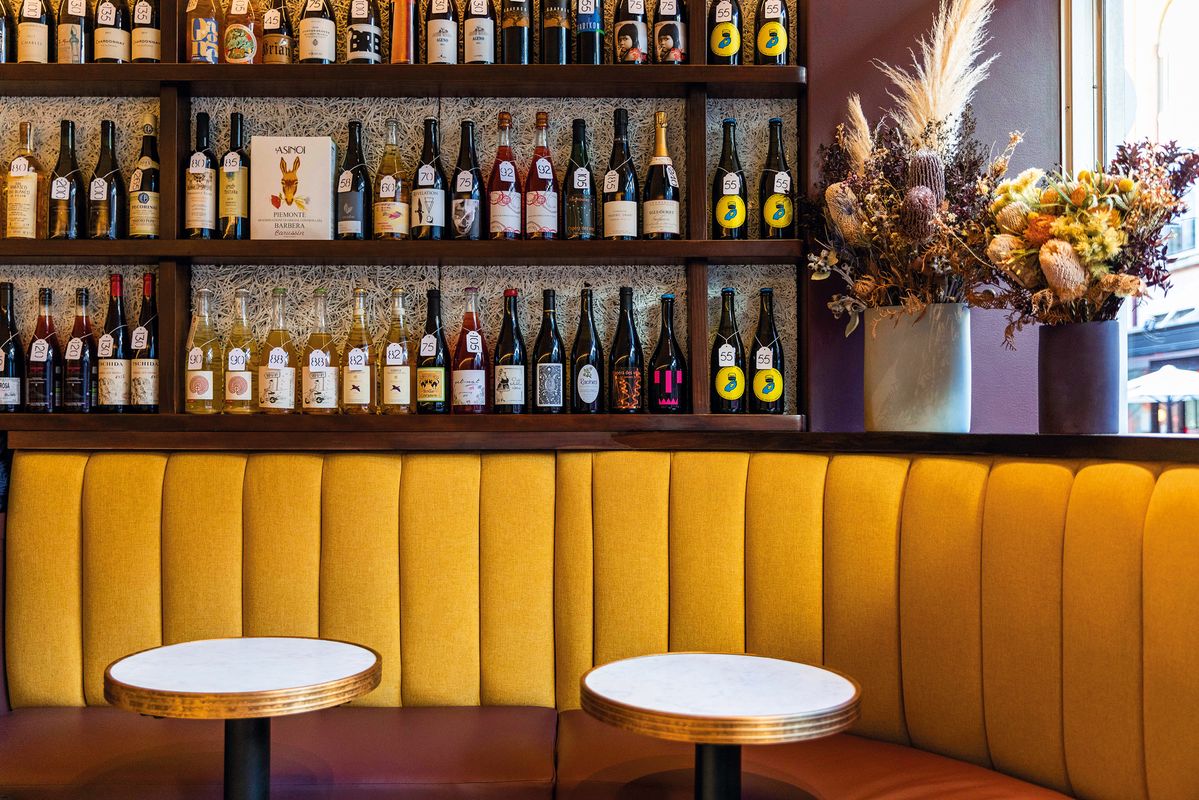Funny things have been happening to our temporal perspectives in the COVID-19 pandemic. There’s a kind of limbo, a stasis, where we ostensibly have time to “waste” yet we feel more urgently the preciousness of our limited time on earth. Other odd things are happening too, as we recognize that some simple things we took for granted – good company, a bottle of wine shared, the bustle of urban places – are more profound for our wellbeing than we knew. How frustrating then that the Leigh Street Wine Room (LSWR) in Adelaide by Studio Gram had to close in the shutdown (and during the time I wrote this story), just as it was establishing itself as an ideal place to pass time in the convivial imbibing of quality wine.
Opened in September 2019, LSWR is an idiosyncratic addition to the vital hospitality scene that has been growing in the west end of the city over the last five years. With extensive international food and wine experience, owners Sali and Nathan Sasi (Nathan is also the chef) conceived a venue that is neither restaurant nor bar, but instead “an institution” – comfortingly familiar from the outset, not flashy or self-consciously new. They chose designers Dave Bickmore and Graham Charbonneau not just for their previous hospitality design successes, like Osteria Oggi and nearby Shobosho, but also because they shared a “top three” favourite bar in the world – La Buvette in Paris. This European lineage echoes through the layout, furniture and robust detail of this compact venue (only 50 patrons), without slavishly mimicking. Focusing on low-intervention wines and seasonal food, LSWR sits neatly between hip and heritage, modest and funky.
Externally, the project is deliberately low-intervention too; LSWR barely ruffles the streetfront. Traditional gold-leaf window signage and restrained terrazzo panels in alabaster and French navy are the only clues that the old dry cleaner’s shop has found a new purpose (its illuminated sign remains as a nostalgic reminder). In the shopfront section, the “unicorn shelf” displays the current crop of the most distinctive wine offerings with a kind of casual-seriousness that underwrites the whole operation of the place.
Inside, the almost dysfunctionally narrow space makes precise use of all of its 3.4-metre width. A long bar obliges patrons to sit rather than block circulation, and masquerades as a communal table by clever handling of its boundaries and end points. The distinction between sommelier and customer is blurred, so that choosing a wine becomes a conversation with a friend, rather than an order from a wine list. In fact, there is no wine list, but instead a “wall of wine” covers effectively half the space, and simultaneously delivers core product and aesthetic ambience. Exploiting the refined design artefact of wine bottles (and their paraphernalia) is a well-worn language of bars all over the world, but here, set against a rugged and acoustically forgiving backdrop of Woodtex panels, it acquires a fresh inflection.
The artwork selection is combined with posters from wineries and set against a rugged backdrop of Woodtex panels. Artwork: Anna Vu, Louise Sheeran and Tegan Hendel.
Image: Lewis Potter
Springing from this active datum, a five-metre-high barrelled ceiling runs the length of the space, creating volume and evoking the vaulted enclosure of a French cave à vins. Cleanly rendered without the interruption of extraneous services, the nicely stretched proportions of the arched section draw the eye from front to back, and allow views to the street from the mezzanine above the rear kitchen.
Studio Gram sees LSWR as a pivotal project that marks the maturing of its portfolio and the synthesis of the nuanced spatial and functional strategies it has deployed over the practice’s six-year history. Although it is one of the practice’s smallest, most economical works to date, it is one of the richest in material mix. On a conventional selections board, the variety of pattern, colour, texture and scale might seem mismatched, yet the assemblage of walnut timbers, patinated brass and ceramics is held together by one common characteristic: they are good at “ageing in place.” Some of them have already been ageing patiently in Studio Gram’s resources library, waiting for the right moment – like the ‘Deconstructed Rose’ fabric of the bar stools that looks straight from Grandma’s couch. There is a satisfying tension and eclecticism in the overall effect, as if it has been added to incrementally and thoughtfully over time, as at those stalwarts of the hospitality industry Pellegrini’s, Jimmy Watson’s or, in Adelaide, the now defunct Flash Gelati Bar.
Dense shelving helps to display the current crop of wine offerings.
Image: Lewis Potter
In the long tradition of European bottegas and zinc bars, these types of places are recognized as potent urban catalysts that galvanize our love for and occupation of the city. LSWR was “ahead of the curve” in recognizing our collective desire for slow, solid time in public yet personal places, well before we became oppressed by that other curve. It is comforting to know that when it can eventually reopen, and indeed for long years afterwards, time will not have altered its appeal.
Products and materials
- Walls and ceilings
- Woodtex Acoustic Panels painted in Dulux ‘Shell White.’ Arched ceiling rendered in Dulux Acratex Roll-On in ‘Shell White.’ Mezzanine walls and ceilings painted in Dulux ‘Blue Exult.’
- Windows and window treatments
- Existing shopfront is repolished aluminium. Existing timber windows painted in Dulux ‘Blue Exult.’ Gold leaf on shopfront glazing.
- Doors
- Custom steel entry door with handpainted signage.
- Flooring
- Ground floor is existing suspended slab tiled in I Cocci Cemento Spaccatto tiles from National Tiles, and ‘Vanilla and White’ and ‘Rouge’ tiles from Winckelmans. Mezzanine flooring is ‘Saddle’ boards by Made By Storey.
- Lighting
- Menu JWDA Table Lamp and TR Bulb Wall Lamp from Aptos Cruz Galleries. Akoya Pendant by Rich Brilliant Willing from Koda. Unios Titanium lighting and Aeon Flex from Hi Lighting.
- Furniture
- Thonet No.31 Fureau from 1000 Chairs. Diiva stool from Grazia & Co with Kvadrat Maharam Deconstructed Rose seat pad and Warwick Globe Sunshine backrest. Custom-made table.
- Other
- Artwork by Billie Justice Thomson.
Credits
- Project
- Leigh Street Wine Room
- Design practice
- Studio Gram
Adelaide, SA, 5034, Australia
- Project Team
- Graham Charbonneau, Dave Bickmore, Alistair Reeve
- Consultants
-
Graphics and branding
After Hours
Landscaping E-S-T
Structural engineer MLEI Consulting Engineers
- Aboriginal Nation
- Built on the land of the Kaurna people.
- Site Details
-
Location
Adelaide,
SA,
Australia
Site type Urban
Budget $300,000
- Project Details
-
Status
Built
Completion date 2020
Design, documentation 3 months
Construction 3 months
Website Leigh Street Wine Room
Category Hospitality, Interiors
Type Bars
Source
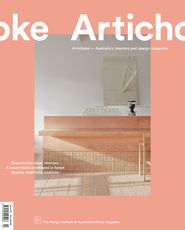
Project
Published online: 9 Mar 2021
Words:
Rachel Hurst
Images:
Josie Withers,
Lewis Potter
Issue
Artichoke, September 2020

